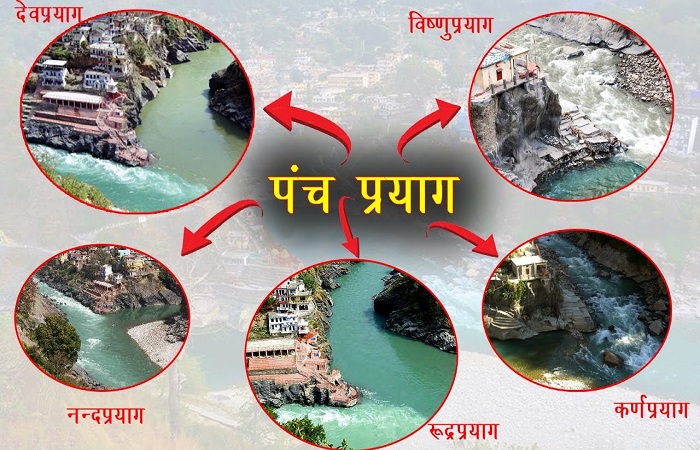
Panch Prayag
The Panch Prayag, meaning “Five Confluences,” are a series of five sacred river confluences in the Garhwal region of Uttarakhand, India. These confluences, where major rivers meet the Alaknanda, are considered highly auspicious and are believed to cleanse one’s soul. Ultimately, these confluences contribute to the formation of the holy Ganges River. Here’s a detailed story of each of the Panch Prayag:
Vishnuprayag:
- Confluence: Dhauliganga and Alaknanda rivers.
- Significance: This is the first Prayag in the series. It is named after Lord Vishnu. Legend has it that Sage Narada meditated here and was blessed by Lord Vishnu.
- Location: Chamoli district.
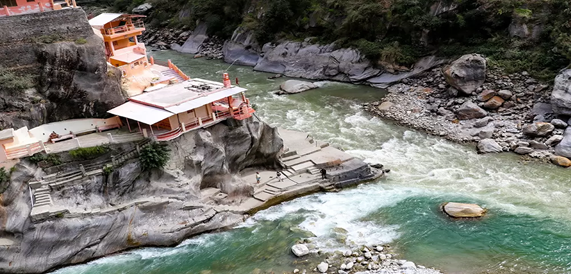
Nandaprayag:
- Confluence: Nandakini and Alaknanda rivers.
- Significance: Named after King Nanda, who is believed to have performed a yajna (fire ritual) here. It is said that Lord Krishna, the foster son of Nanda, blessed this place.
- Location: Chamoli district.
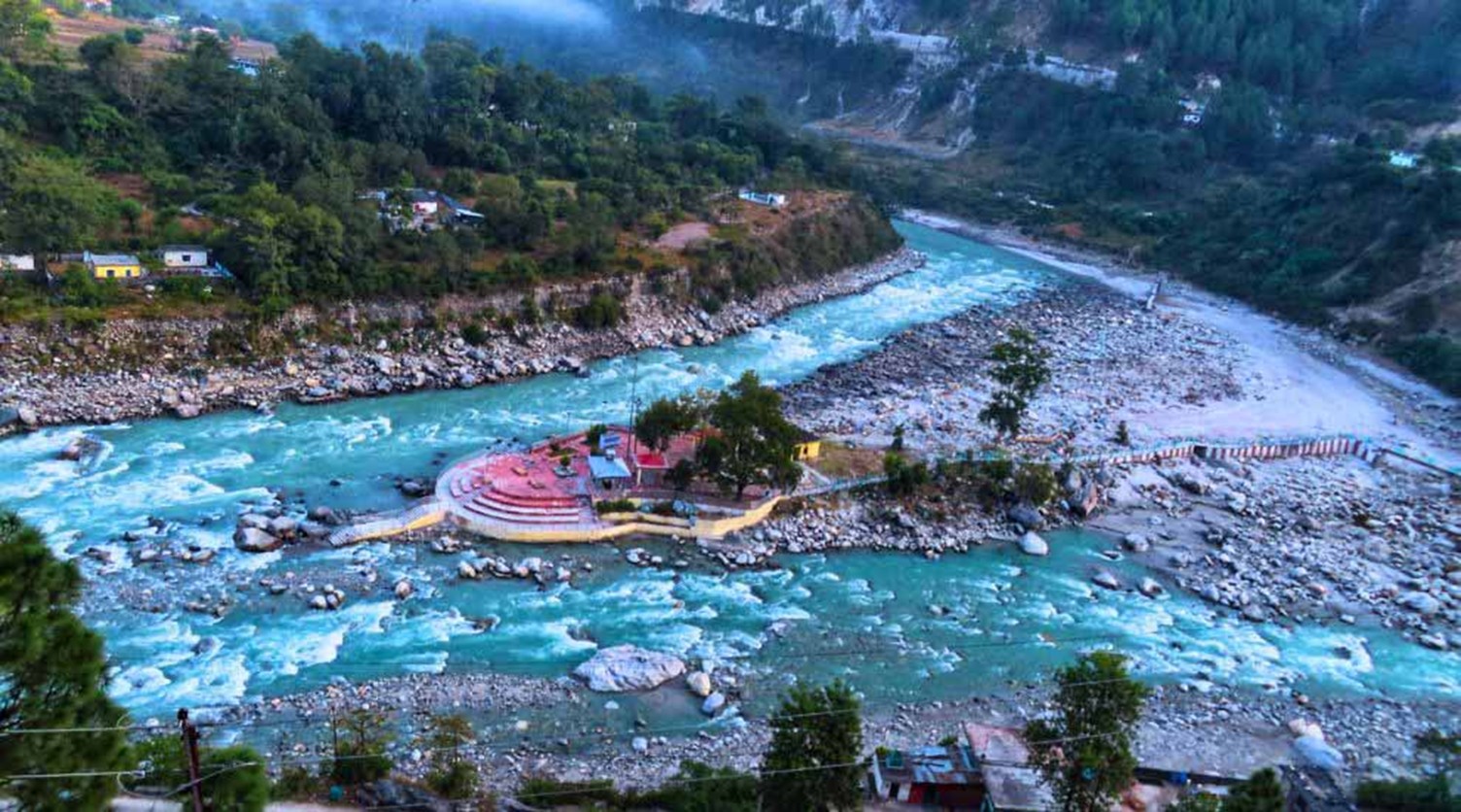
Karanprayag:
- Confluence: Pindar and Alaknanda rivers.
- Significance: This confluence is associated with Karna, a valiant warrior from the Mahabharata. It is believed that he performed penance here and received his divine armor and earrings from the Sun God.
- Location: Chamoli district.
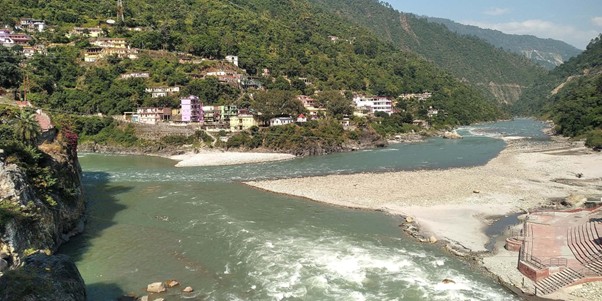
Rudraprayag:
- Confluence: Mandakini and Alaknanda rivers.
- Significance: Named after Lord Shiva, who is also known as Rudra. Legend has it that Lord Shiva appeared here in his Rudra avatar.
- Location: Rudraprayag district.
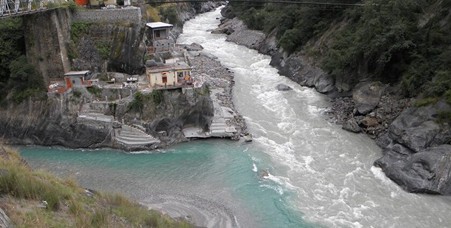
Devprayag:
- Confluence: Bhagirathi and Alaknanda rivers.
- Significance: This is the final Prayag and the most significant of them all. Here, the Bhagirathi and Alaknanda rivers merge to form the mighty Ganges River. It is believed that King Bhagiratha performed intense penance to bring the Ganges down to earth.
- Location: Tehri Garhwal district.
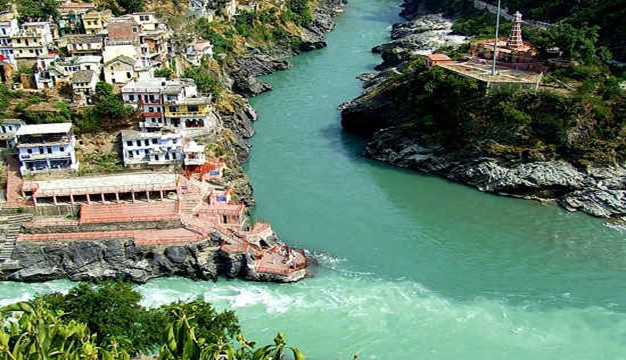
The Legend of the Ganges:
The story of the Panch Prayag is deeply intertwined with the legend of the Ganges. It is said that when Goddess Ganga descended from heaven, her force was so immense that it could have destroyed the earth. To mitigate this, Lord Shiva contained her in his matted locks and released her in 12 streams. These streams eventually converged at Devprayag, forming the Ganges as we know it.
Spiritual Significance:
The Panch Prayag are highly revered by Hindus. Pilgrims visit these confluences to take a holy dip and seek blessings. It is believed that bathing in these waters cleanses one’s sins and brings one closer to moksha (liberation). The Panch Prayag Yatra, a pilgrimage covering all five confluences, is considered a sacred journey.
Cultural Significance:
The Panch Prayag are not just religious sites; they also hold cultural significance. They are a testament to the rich mythology and traditions of Uttarakhand. The towns around these confluences are steeped in history and offer a glimpse into the local culture.
Visiting the Panch Prayag:
The Panch Prayag are well-connected by road and can be visited throughout the year, except during the monsoon season (July-August) and winter months (December-January) when some routes may be closed due to landslides or snowfall. The best time to visit is during the summer months (May-June) and autumn (September-October).
The Panch Prayag are a must-visit for anyone interested in Hindu mythology, spirituality, and the natural beauty of Uttarakhand. These sacred confluences offer a unique and enriching experience, leaving visitors with a sense of peace and tranquility.
